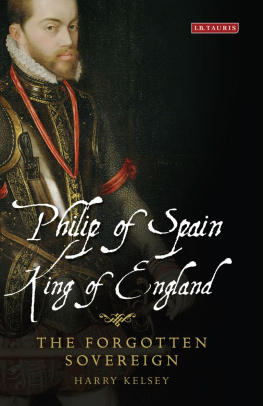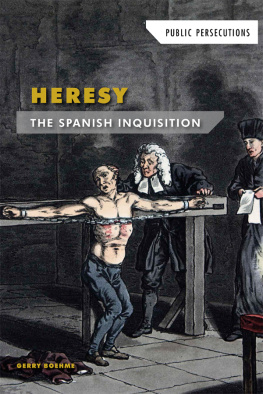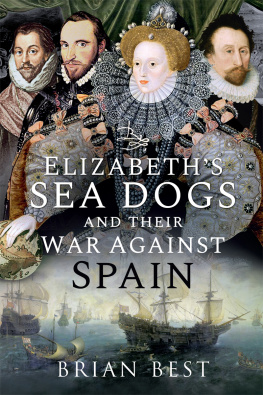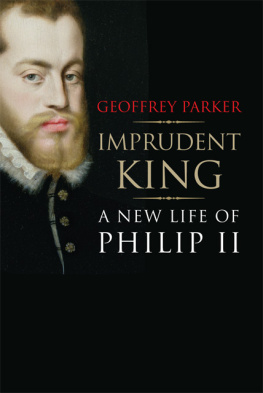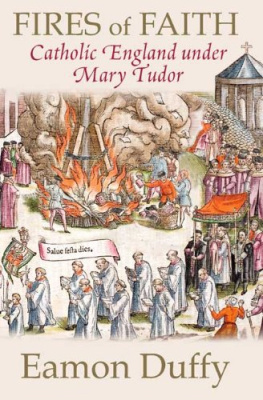REFORMING CATHOLICISM IN THE
ENGLAND OF MARY TUDOR
Reforming Catholicism in the
England of Mary Tudor
The Achievement of Friar Bartolom Carranza
Edited by
JOHN EDWARDS
University of Oxford, UK
RONALD TRUMAN
Christ Church, Oxford, UK
First published 2005 by Ashgate Publishing
Published 2016 by Routledge
2 Park Square, Milton Park, Abingdon, Oxon OX14 4RN
711 Third Avenue, New York, NY 10017, USA
Routledge is an imprint of the Taylor & Francis Group, an informa business
Copyright 2005 John Edwards and Ronald Truman
John Edwards and Ronald Truman have asserted their moral rights under the Copyright, Designs and Patents Act, 1988, to be identified as the editors of this work.
All rights reserved. No part of this book may be reprinted or reproduced or utilised in any form or by any electronic, mechanical, or other means, now known or hereafter invented, including photocopying and recording, or in any information storage or retrieval system, without permission in writing from the publishers.
Notice:
Product or corporate names may be trademarks or registered trademarks, and are used only for identification and explanation without intent to infringe.
British Library Cataloguing in Publication Data
Reforming Catholicism in the England of Mary Tudor : the achievement of Friar
Bartolom Carranza.(Catholic Christendom, 13001700)
1. Carranza, Bartolom, 15031576Congresses 2. Catholic ChurchEngland
History16th centuryCongresses 3.EnglandChurch history16th century
Congresses 4.Great BritainHistoryMary I, 15531558
I.Edwards, John, 1949 II.Truman, R.W.
282.4209031
Library of Congress Cataloging-in-Publication Data
Reforming Catholicism in the England of Mary Tudor : the achievement of Friar
Bartolom Carranza / edited by John Edwards and Ronald Truman.
p. cm. (Catholic Christendom, 13001700)
Includes bibliographical references and index.
ISBN 0-7546-5236-X (alk. paper)
1. Carranza, Bartolom, 15031576. 2. Catholic ChurchEnglandHistory16th
century. 3. EnglandChurch history16th century. 4. Great BritainHistory
Mary I, 15531558. I. Edwards, John,
1949II. Truman, R. W. III. Series.
BX4705.C316R44 2005
282.4209031dc22
2004026334
ISBN 9780754652366 (hbk)
Contents
John Edwards
Jos Ignacio Tellechea Idgoras (translated by Ronald Truman)
David Loades
Lucy Wooding
Thomas F. Mayer
Dermot Fenlon
Patrick Preston
William Wizeman SJ
John Edwards
Andrew Hegarty
Anthony Wright
Ronald Truman
The still-usual emphasis on medieval (or Catholic) and reformation (or Protestant) religious history has meant neglect of the middle ground, both chronological and ideological. As a result, continuities between the middle ages and early modern Europe have been overlooked in favor of emphasis on radical discontinuities. Further, especially in the later period, the identification of reformation with various kinds of Protestantism means that the vitality and creativity of the established church, whether in its Roman or local manifestations, has been left out of account. In the last few years, an upsurge of interest in the history of traditional (or catholic) religion makes these inadequacies in received scholarship even more glaring and in need of systematic correction. The series will attempt this by covering all varieties of religious behavior, broadly interpreted, not just (or even especially) traditional institutional and doctrinal church history. It will to the maximum degree possible be interdisciplinary, comparative and global, as well as non-confessional. The goal is to understand religion, primarily of the Catholic variety, as a broadly human phenomenon, rather than as a privileged mode of access to superhuman realms, even implicitly.
The period covered, 13001700, embraces the moment which saw an almost complete transformation of the place of religion in the life of Europeans, whether considered as a system of beliefs, as an institution, or as a set of social and cultural practices. In 1300, vast numbers of Europeans, from the pope down, fully expected Jesuss return and the beginning of His reign on earth. By 1700, very few Europeans, of whatever level of education, would have subscribed to such chiliastic beliefs. Pierre Bayles notorious sarcasms about signs and portents are not idiosyncratic. Likewise, in 1300 the vast majority of Europeans probably regarded the pope as their spiritual head; the institution he headed was probably the most tightly integrated and effective bureaucracy in Europe. Most Europeans were at least nominally Christian, and the pope had at least nominal knowledge of that fact. The papacy, as an institution, played a central role in high politics, and the clergy in general formed an integral part of most governments, whether central or local. By 1700, Europe was divided into a myriad of different religious allegiances, and even those areas officially subordinate to the pope were both more nominally Catholic in belief (despite colossal efforts at imposing uniformity) and also in allegiance than they had been four hundred years earlier. The pope had become only one political factor, and not one of the first rank. The clergy, for its part, had virtually disappeared from secular governments as well as losing much of its local authority. The stage was set for the Enlightenment.
Thomas F. Mayer,
Augustana College
John Edwards. Research Fellow in Spanish at the University of Oxford, and formerly Reader in Spanish History at the University of Birmingham, he is the author of several books and articles on the religious and social history of Spain in the fifteenth and sixteenth centuries, and a Corresponding Member of the Spanish Royal Academy of History.
Dermot Fenlon. Now a member of the Congregation of the Oratory in Birmingham, he taught early modern history in Cambridge and Church history at Oscott College. Author of Heresy and obedience in Tridentine Italy: Cardinal Vole and the Counter-Reformation (1972), he is a Fellow of the Institute for Advanced Research in the Humanities at the University of Birmingham.
Andrew Hegarty. Currently Assistant Editor of a new history of Magdalen College, Oxford, he is completing a biographical register of St Johns College, Oxford, 15571660. His research focuses on the early modern universities of Oxford, Salamanca, and Paris.
David Loades. Director of the British Academy John Foxe Project, he is Professor Emeritus of the University of Wales and Honorary Research Professor of the University of Sheffield. His publications include Mary Tudor: A life (1989) and The reign of Maiy Tudor (1991).
Thomas F. Mayer. Professor of History at Augustana College, Rock Island, Illinois and Director of the Center for the Study of the Christian Millennium, he is the author of Reginald Pole: Prince and prophet (2000) and editor of The correspondence of Reginald Pole (2002).
Patrick Preston. Research Fellow in Church History in the Department of Theology and Ministry, University College, Chichester, he has published several articles on aspects of Italian history in the sixteenth century, and in particular on Ambrosius Catharinus.



